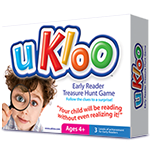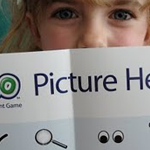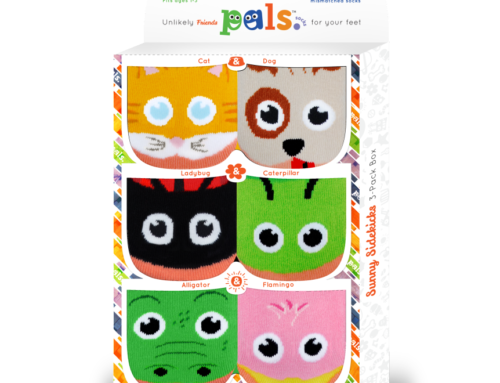Getting our children to read seems to be a national pastime. We expect young children to be reading before they can tie their shoes and when they don’t, our society seems to think something is “wrong” with our kids. It’s an asinine view that has no basis in educational theory or neurological development. However, the damage this theory causes is evident when we see how children end up hating reading because of the intense pressure to meet what can be unrealistic expectations.
For those of us – myself included – who has moved away from these expectations, life is easier because there’s no real stress about when our kids will read. However, we still know our kids need to learn to read. The question facing most of us is: How? How are we going to teach this skill in a fun, engaging way that doesn’t seem like “work” for our kids. This becomes even more pressing when our kids get older and still aren’t reading.
 There are lots of different methods out there, but one thing we know kids often need to help them persevere in something is that bit of success to begin. That boost that comes from seeing that you can do something, even just a little bit. This is where uKloo, a game developed by a mother whose son struggled with reading, comes into play.
There are lots of different methods out there, but one thing we know kids often need to help them persevere in something is that bit of success to begin. That boost that comes from seeing that you can do something, even just a little bit. This is where uKloo, a game developed by a mother whose son struggled with reading, comes into play.
I was sent a copy of uKloo to try out as my own daughter isn’t reading yet and was the perfect age for it. I should mention I also have a daughter who is highly active and games or activities that have us sitting still for long periods don’t tend to work well. uKloo avoids that whole “sit down and work” thing by being a type of scavenger hunt.
How does it work?
The premise of the game is this: There is one card at the end that you can write whatever you want on for a final “prize” (we’ve done an episode of a favourite show, trip to the park, and so on), something your child is eager for that day. The card is laminated and so you can erase it if you use the right marker and change it up each time you play. You, the parent, then build cards back that are already prewritten about where to look for the next clue. The cards have things like “Under the sofa” on them. Now, the cards are all in writing, no images to help, but there is a picture “dictionary” sheet that comes with the game that you put up somewhere visible. For us, it’s the fridge. This has the words on it and then an associated picture showing kids what that word is. So the child takes their card and then matches the words to find the images and figures out what the clue is. The hope is that over time, children learn to at least sight read some of these words, giving them the boost they need to keep going with reading.
So how has it worked for us?
 It’s worked well in that my daughter is interested in the game itself and the boost of a bit of reading. Regardless of any success in reading, it is a fun game. One of the bonuses for us is that you can make the game as long or short as you like, depending on how much time your child wants to spend “hunting”. You can also start with just the same verbs/nouns/adjectives until your child cracks it or continue to mix them up, all depends on your child’s style of learning.
It’s worked well in that my daughter is interested in the game itself and the boost of a bit of reading. Regardless of any success in reading, it is a fun game. One of the bonuses for us is that you can make the game as long or short as you like, depending on how much time your child wants to spend “hunting”. You can also start with just the same verbs/nouns/adjectives until your child cracks it or continue to mix them up, all depends on your child’s style of learning.
Is this phonics-based learning?
One of the complaints that may come up is that this is really only providing sight reading and not phonics. Some kids learn very well starting with sight reading and never need explicit phonics instruction. When I spoke to Doreen, the creator of uKloo, she had this to say:
You are quite right in that the game does not address phonics. This was purposeful when developing it for my son. I fully support phonics as a reading tool but when learning to read my son was overwhelmed with the idea of sounding out each letter in a sentence or paragraph. When developing the game, it was my intention to boost his self-confidence and offer an additional and alternative approach to his phonics heavy school work.
After seeing my son and talking to other parents with similar experiences, I developed a theory about reading… The theory is that in the end we all sight read. As adults, we recognize words visually and pull phonics out of our tool kit when we are faced with new or unusual words. If a child can experience this too, by realizing that they know the word “look” or “hat” or “helmet” …they soon discover that reading isn’t the overwhelming task of sounding out each letter in every word in a book. From there, phonics is a bit less overwhelming.
So yes, this is all about sight reading, but I found Doreen’s point about having the ability to sight read a bit quite helpful in thinking about phonics because many children will need phonics, but it doesn’t have to be a scary thing.
However, you can also work phonics into uKloo and this is where parental involvement comes in: When matching the words to the images, I have spent the time with my daughter to focus on the sounds of these words as well, giving her the boost in thinking about phonics as well as reading the entire word.
Is this the only thing you’ll need to get your child reading?
Likely not, but it is a very fun and engaging tool to add to your toolkit for all kids. And for kids who need that boost of success to keep going or to ease the anxiety that phonics-only based programs can cause, it’s a wonderful way to give it to them.
**There is also a later version of uKloo Riddle Edition for more advanced readers looking to focus on reading comprehension and problem solving. It is too old for my daughter and thus I am unable to speak to it, but I imagine if it’s like the Early Reader Edition, it too would be fun for children.**
You can check out uKloo and where to buy it at: http://ukloo.com/
You can also find it on Amazon here:


Leave A Comment